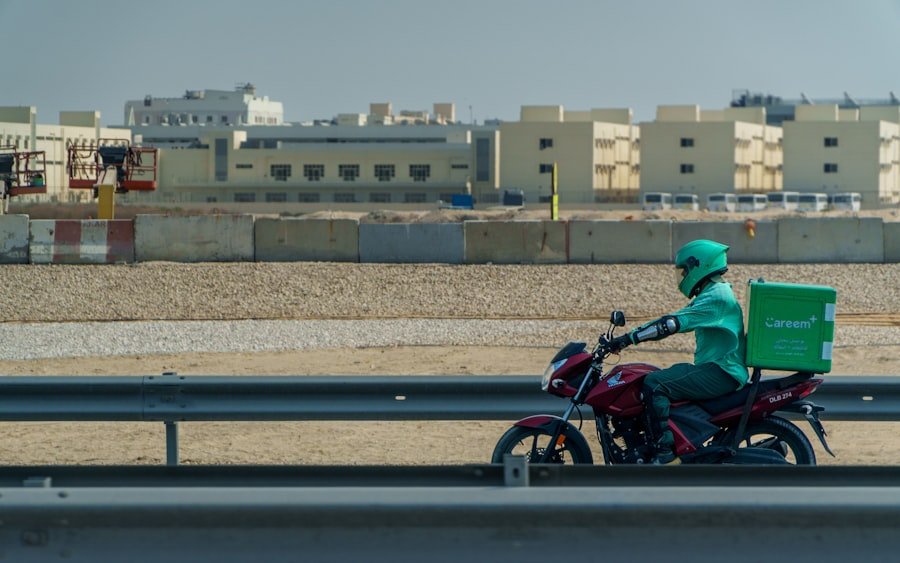Now Reading: Crafting the Ultimate FPS Campaign: Key Elements
-
01
Crafting the Ultimate FPS Campaign: Key Elements
Crafting the Ultimate FPS Campaign: Key Elements

As a passionate gamer, I have always been captivated by the immersive worlds and gripping narratives that first-person shooters (FPS) can offer. Crafting the ultimate FPS campaign is not merely about creating a series of levels filled with enemies to shoot; it’s about weaving together a rich tapestry of storytelling, gameplay mechanics, and player engagement. The best FPS campaigns draw players into their universe, making them feel like integral parts of the story while challenging their skills and reflexes.
In this article, I will explore the essential elements that contribute to an unforgettable FPS experience, from narrative design to soundscapes, and how each component plays a vital role in creating a cohesive and engaging campaign. The journey of developing an FPS campaign is akin to constructing a complex puzzle where every piece must fit perfectly to create a satisfying whole. Each element, whether it be the storyline, level design, or enemy behavior, must work in harmony to ensure that players remain invested from start to finish.
As I delve into the various aspects of crafting an FPS campaign, I will share insights and observations that highlight the importance of each component and how they contribute to the overall experience.
Key Takeaways
- Crafting the ultimate FPS campaign requires a combination of storytelling, level design, enemy AI, player progression, mission structure, sound design, cinematic cutscenes, replayability, and balancing challenge and accessibility.
- Storytelling and narrative design are crucial in creating an engaging and immersive FPS campaign, with a focus on character development and plot twists.
- Level design and environmental detail play a significant role in enhancing the player’s experience, with attention to creating diverse and interactive environments.
- Enemy AI and combat mechanics should be challenging and dynamic, requiring strategic thinking and skillful gameplay from the player.
- Player progression and customization add depth to the FPS campaign, allowing players to personalize their experience and feel a sense of accomplishment.
Storytelling and Narrative Design
At the heart of any compelling FPS campaign lies its narrative. A well-crafted story can elevate a game from being just another shooter to an unforgettable experience that resonates with players long after they’ve put down the controller. I believe that effective storytelling in an FPS should not only provide context for the action but also develop characters that players can connect with emotionally.
Whether it’s a lone soldier fighting against overwhelming odds or a team of operatives working together to thwart a global threat, the narrative should engage players and make them care about the outcome. In my experience, the best narratives in FPS games often incorporate themes of sacrifice, heroism, and moral ambiguity. These themes can create a deeper emotional connection between the player and the characters they control.
I find that when players are invested in the story, they are more likely to immerse themselves in the gameplay, making every victory feel earned and every defeat more poignant.
Level Design and Environmental Detail

Level design is another critical aspect of crafting an engaging FPS campaign. The environments in which players navigate should not only be visually stunning but also serve as integral components of gameplay. I have always appreciated levels that encourage exploration and reward curiosity, allowing players to discover hidden areas or collectibles that enhance their understanding of the game world.
A well-designed level can create a sense of immersion that draws players deeper into the narrative. Moreover, environmental detail plays a significant role in establishing atmosphere and mood. I find that levels filled with intricate details—such as weather effects, dynamic lighting, and interactive elements—can significantly enhance the player’s experience.
When I step into a meticulously crafted environment, I feel as though I am part of a living, breathing world rather than just a series of static backdrops.
Enemy AI and Combat Mechanics
The challenge presented by enemy AI is crucial in maintaining player engagement throughout an FPS campaign. I have encountered games where enemy behavior feels predictable and uninspired, leading to repetitive gameplay that quickly loses its appeal. In contrast, well-designed AI can create dynamic encounters that require players to adapt their strategies on the fly.
I appreciate when enemies exhibit varied behaviors—such as flanking, taking cover, or coordinating attacks—which forces me to think critically about my approach. Combat mechanics also play a vital role in shaping the overall experience of an FPS campaign. The feel of shooting mechanics, weapon variety, and feedback from each shot fired can significantly impact my enjoyment of the game.
I find that responsive controls and satisfying gunplay are essential for creating an adrenaline-pumping experience. When I pull the trigger and feel the weight of my weapon combined with impactful sound design, it enhances my immersion and makes each encounter feel exhilarating.
Player Progression and Customization
Player progression is another key element that can greatly influence my engagement with an FPS campaign. The sense of growth and development throughout the game can be incredibly rewarding. I enjoy when games offer skill trees or upgrade systems that allow me to tailor my character’s abilities to suit my playstyle.
This level of customization not only enhances my connection to the character but also encourages experimentation with different strategies. Moreover, cosmetic customization options can add an extra layer of personalization to my gaming experience. Whether it’s unlocking new skins for weapons or outfits for my character, these elements allow me to express my individuality within the game world.
I find that when I have control over how my character looks and plays, it deepens my investment in the campaign and makes each victory feel even more significant.
Mission Structure and Objectives

The Importance of Mission Structure in FPS Campaigns
Missions that are designed with variety in mind can greatly enhance the pacing and player engagement of an FPS campaign. By offering different objectives such as stealthy infiltration, all-out assaults, or timed challenges, gameplay can remain fresh and prevent monotony from setting in.
### Keeping Players Engaged
Thoughtfully crafted unique goals can make players more eager to see what comes next. Additionally, incorporating side missions or optional objectives can enhance replayability and provide players with opportunities to explore different facets of the game world.
### Rewarding Exploration and Skillful Play
I enjoy when games reward exploration or skillful play with additional content or lore that enriches my understanding of the narrative. This approach not only adds depth to the campaign but also encourages me to engage with the game beyond just completing main objectives.
Sound Design and Music
Sound design is often an underappreciated aspect of crafting an FPS campaign, yet it plays a crucial role in shaping my overall experience. The auditory elements—ranging from weapon sounds to environmental effects—can significantly enhance immersion. I find that when gunfire sounds crisp and impactful, it adds weight to each encounter and makes combat feel more visceral.
Additionally, ambient sounds can help establish atmosphere, drawing me deeper into the game world. Music also plays a pivotal role in setting the tone for key moments within an FPS campaign. A well-composed soundtrack can elevate emotional scenes or heighten tension during intense firefights.
I appreciate when music dynamically shifts based on gameplay events—ramping up during climactic moments or fading during quieter exploration segments. This seamless integration of sound can create a more cohesive experience that resonates with me long after I’ve finished playing.
Cinematic Cutscenes and In-Game Events
Cinematic cutscenes serve as powerful storytelling tools within an FPS campaign. They provide opportunities for character development and plot progression that may not be possible through gameplay alone. I enjoy when cutscenes are used sparingly but effectively—allowing me to catch my breath between intense action sequences while still advancing the narrative.
When these moments are well-directed and visually stunning, they can leave a lasting impression. In-game events also contribute to storytelling by allowing players to witness pivotal moments unfold in real-time. Whether it’s a dramatic betrayal or a climactic battle, these events can create memorable experiences that enhance my emotional investment in the story.
I find that when games seamlessly blend gameplay with cinematic moments, it creates a more immersive experience that keeps me engaged throughout the campaign.
Replayability and Player Choices
Replayability is an essential factor in determining the longevity of an FPS campaign. I appreciate when games offer multiple paths or endings based on player choices—allowing me to experience different outcomes based on my decisions throughout the game. This level of agency not only encourages exploration but also invites me to replay missions with different strategies or approaches.
Additionally, incorporating branching narratives or moral dilemmas can add depth to player choices. When faced with difficult decisions that impact characters or storylines, I find myself more invested in the outcome. This sense of consequence enhances replayability as I am compelled to explore alternative choices during subsequent playthroughs.
Balancing Challenge and Accessibility
Striking a balance between challenge and accessibility is crucial for ensuring that an FPS campaign appeals to a wide audience. While I enjoy challenging gameplay that tests my skills, I also appreciate when games offer options for players who may be less experienced or seeking a more casual experience. Difficulty settings can play a significant role in this regard—allowing me to tailor my experience based on my comfort level.
Moreover, incorporating tutorials or gradual difficulty spikes can help new players acclimate without feeling overwhelmed. I believe that providing accessible options ensures that more players can enjoy the campaign while still offering challenges for those seeking mastery over their skills.
Bringing it All Together
In conclusion, crafting the ultimate FPS campaign requires careful consideration of numerous elements—from storytelling and level design to soundscapes and player choices. Each component plays a vital role in creating an immersive experience that captivates players from start to finish. As I reflect on what makes an FPS campaign truly exceptional, it becomes clear that it is not just about shooting mechanics or flashy graphics; it’s about creating a cohesive world where players feel invested in both the narrative and gameplay.
Ultimately, when all these elements come together harmoniously, they create an unforgettable journey that resonates with players long after they’ve put down their controllers. As someone who has experienced countless FPS campaigns over the years, I am continually excited by the potential for innovation within this genre—and I look forward to seeing how future titles will push boundaries while delivering engaging narratives and thrilling gameplay experiences.
When discussing what makes a great first-person shooter campaign, it’s important to consider the impact of gaming deals on the overall experience. Black Friday gaming deals can provide players with the opportunity to expand their gaming library and try out new campaigns. In fact, one article explores how scoring big on Black Friday can enhance the gaming experience. Additionally, trailers play a crucial role in building anticipation for upcoming campaigns and can give players a glimpse of what to expect. For more insights on the importance of trailers in gaming, check out this article.
FAQs
What is a first-person shooter (FPS) campaign?
A first-person shooter (FPS) campaign is a single-player mode in a video game where the player takes on the role of a character and progresses through a series of levels or missions, typically with a focus on combat and shooting mechanics.
What makes a great first-person shooter campaign?
A great first-person shooter campaign is characterized by engaging storytelling, well-designed levels, varied and challenging gameplay, memorable set pieces, and a sense of progression and accomplishment for the player.
What are some key elements of a successful FPS campaign?
Some key elements of a successful FPS campaign include a compelling narrative, well-balanced and responsive gameplay mechanics, diverse and interesting environments, a variety of weapons and tools, and well-designed enemy AI.
How important is level design in a first-person shooter campaign?
Level design is crucial in a first-person shooter campaign as it directly impacts the player’s experience. Well-designed levels can provide a sense of immersion, challenge, and exploration, while also facilitating strategic and dynamic gameplay.
What role does storytelling play in a first-person shooter campaign?
Storytelling in a first-person shooter campaign helps to create a sense of purpose and context for the player’s actions, as well as emotional investment in the game world and its characters. A well-crafted narrative can enhance the overall experience of the campaign.



























